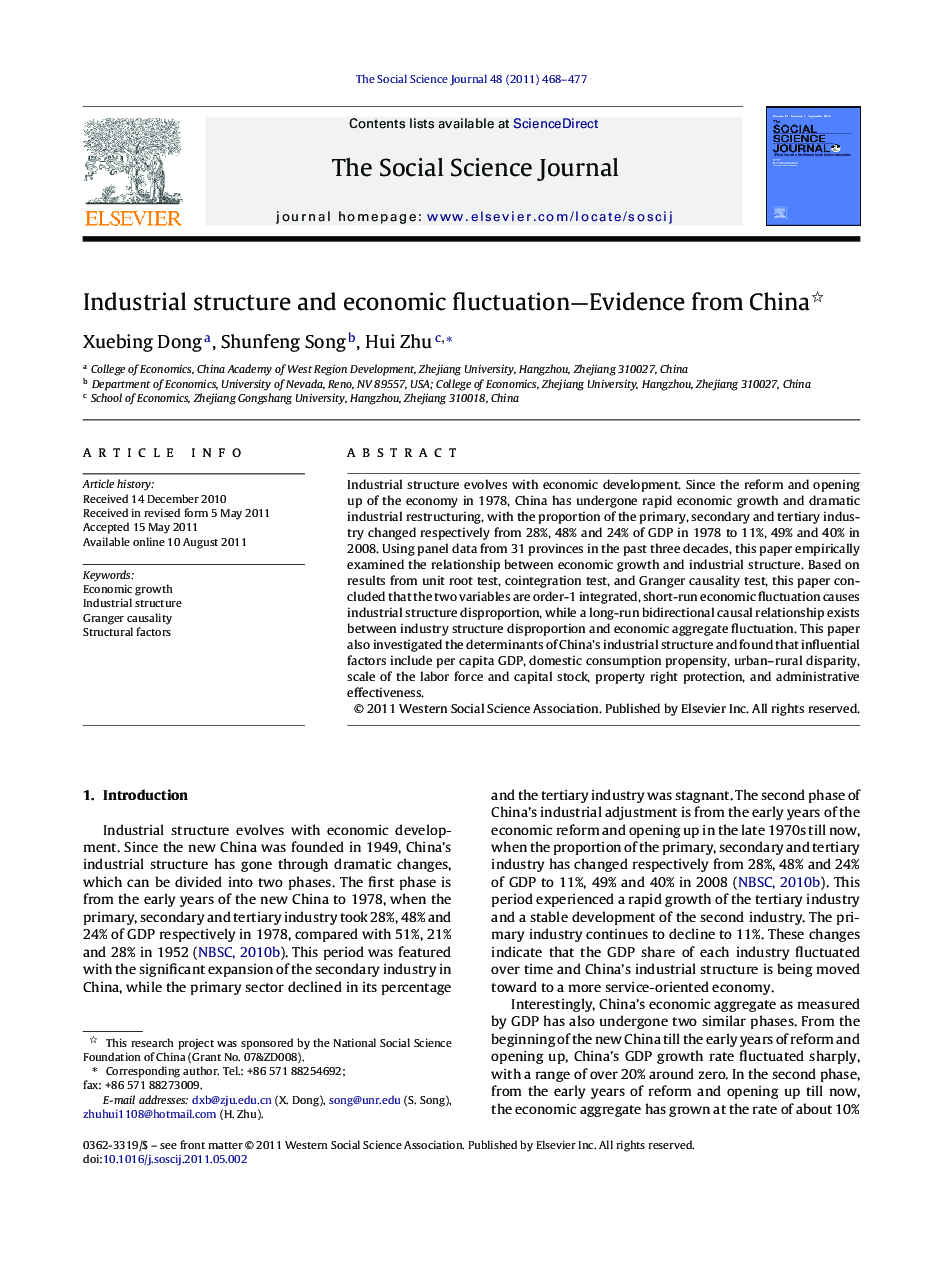| Article ID | Journal | Published Year | Pages | File Type |
|---|---|---|---|---|
| 140405 | The Social Science Journal | 2011 | 10 Pages |
Industrial structure evolves with economic development. Since the reform and opening up of the economy in 1978, China has undergone rapid economic growth and dramatic industrial restructuring, with the proportion of the primary, secondary and tertiary industry changed respectively from 28%, 48% and 24% of GDP in 1978 to 11%, 49% and 40% in 2008. Using panel data from 31 provinces in the past three decades, this paper empirically examined the relationship between economic growth and industrial structure. Based on results from unit root test, cointegration test, and Granger causality test, this paper concluded that the two variables are order-1 integrated, short-run economic fluctuation causes industrial structure disproportion, while a long-run bidirectional causal relationship exists between industry structure disproportion and economic aggregate fluctuation. This paper also investigated the determinants of China's industrial structure and found that influential factors include per capita GDP, domestic consumption propensity, urban–rural disparity, scale of the labor force and capital stock, property right protection, and administrative effectiveness.
► We examined the relationship between economic growth and industrial structure. ► Short-run economic fluctuation causes industrial structure disproportion. ► Long-run bidirectional causal relationship exists. ► This paper also investigated the determinants of industrial structure. ► Facts include demand pattern, supply structure and institutional characteristics.
